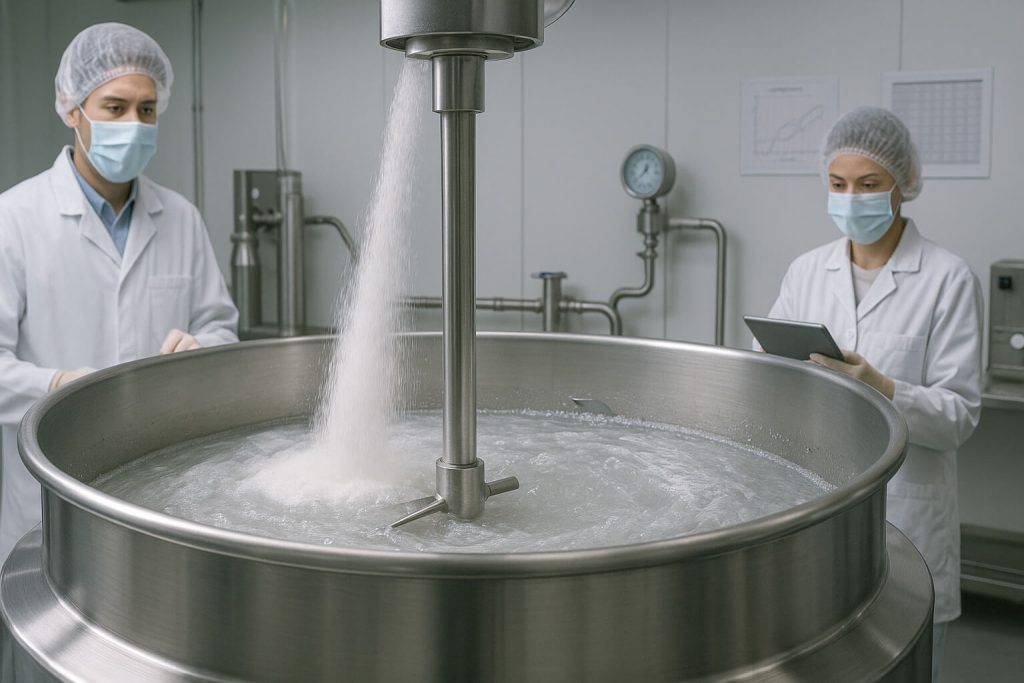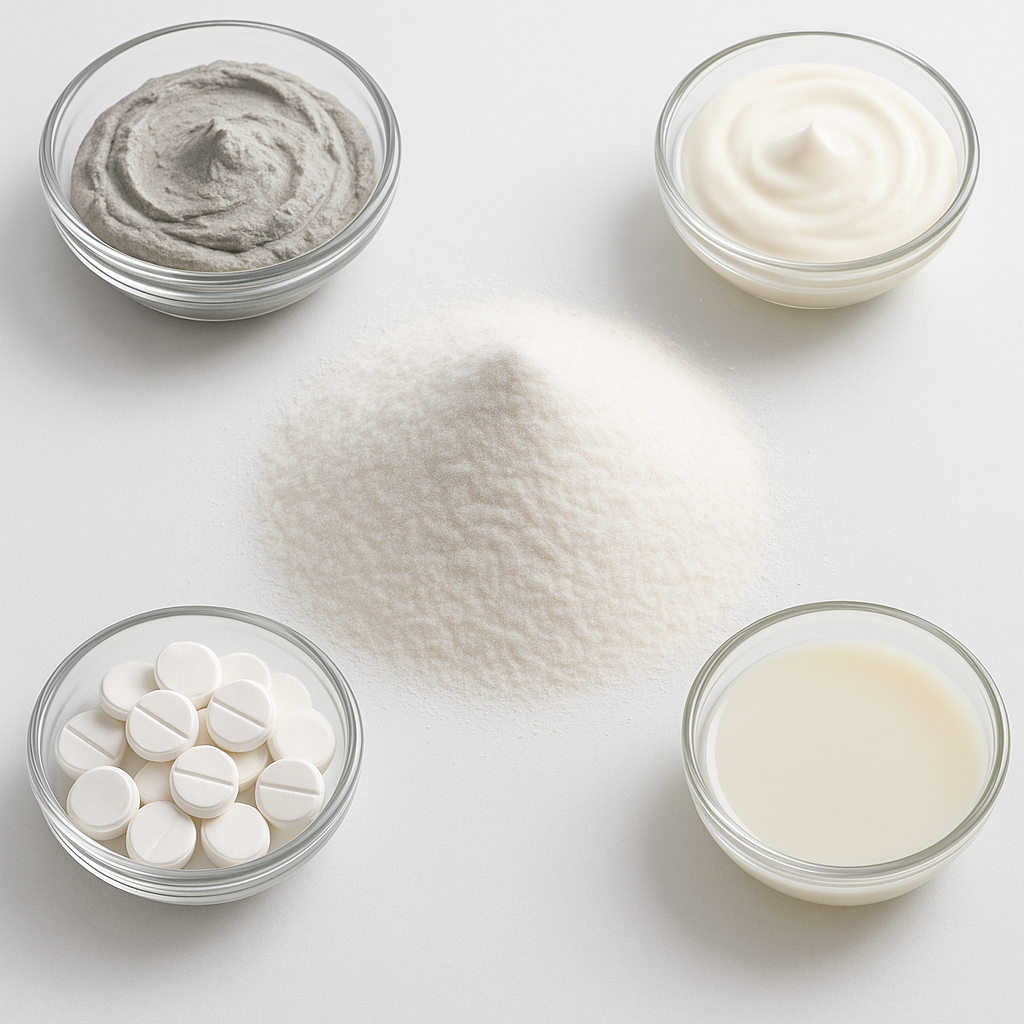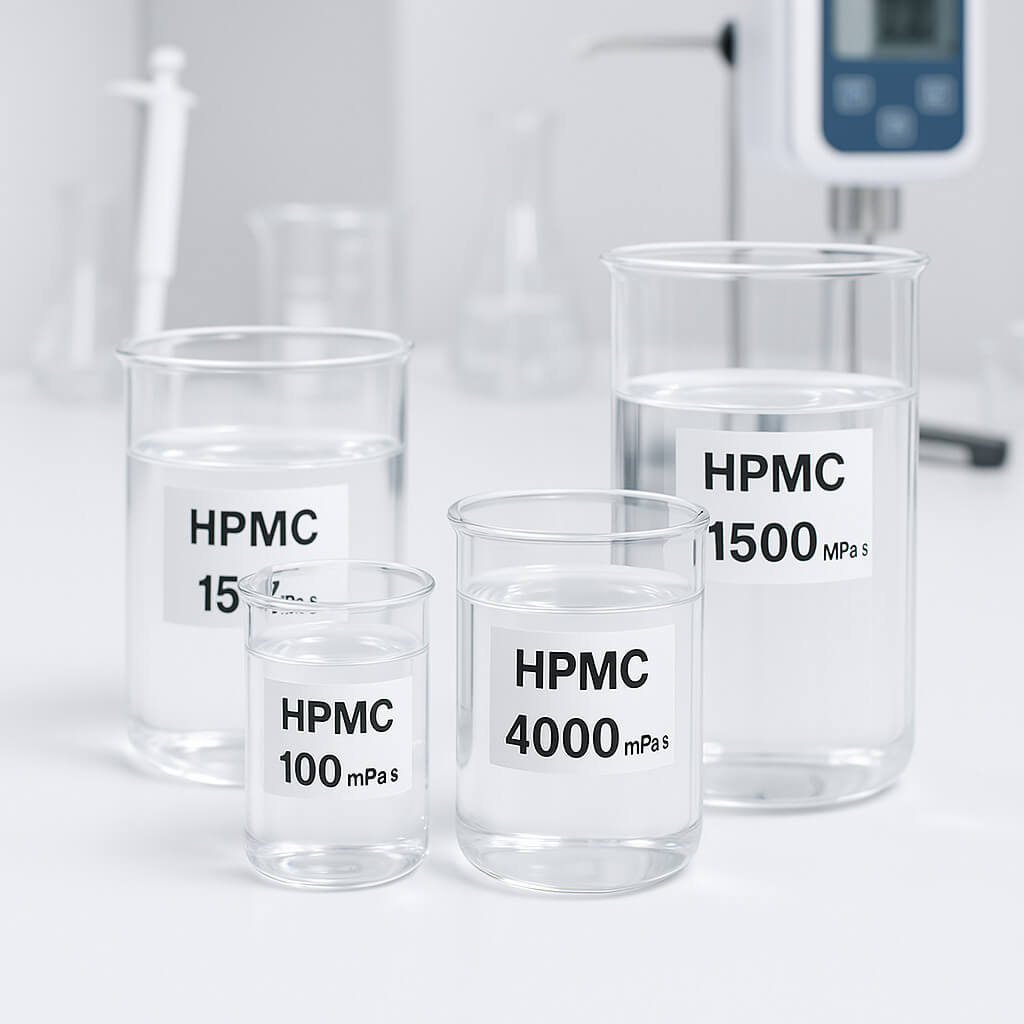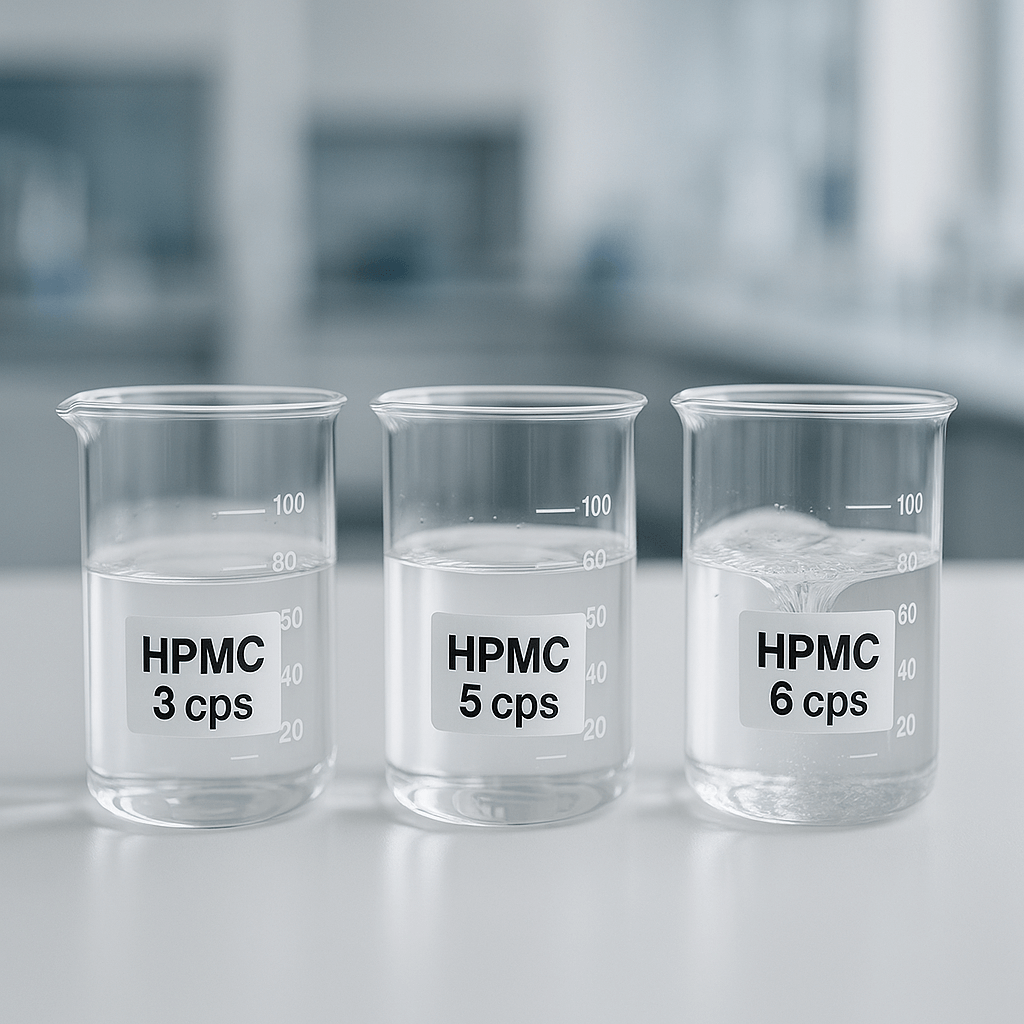Hydroxypropyl Methylcellulose (HPMC) is a cellulose derivative that has a wide range of applications across various industries. From pharmaceuticals to construction, HPMC is used for its unique chemical properties, including its ability to modify viscosity, enhance texture, and improve water retention. Understanding how HPMC works is essential for businesses that use it in their products, as it directly impacts product performance and efficiency. In this article, we will explore the chemistry behind HPMC, its role in industrial applications, and the benefits it offers across different sectors. By the end of this article, you will have a deeper understanding of why HPMC is such an essential ingredient in multiple industries.

1. What is Hydroxypropyl Methylcellulose?
Hydroxypropyl Methylcellulose (HPMC) is a non-ionic cellulose ether that is derived from cellulose, a natural polymer found in plant cell walls. The process of making HPMC begins with cellulose, which undergoes a chemical modification to introduce methyl and hydroxypropyl groups. These modifications are what give HPMC its unique properties, including water solubility, viscosity, and its ability to form films.
HPMC is typically produced by reacting cellulose with methyl chloride and propylene oxide, which introduces the hydroxypropyl and methyl groups into the cellulose structure. These groups affect the solubility of the molecule, making HPMC soluble in water. The degree of substitution of the methyl and hydroxypropyl groups determines the properties of the final product, such as its viscosity and solubility rate.
Here’s the deal: the versatile properties of HPMC make it an indispensable ingredient in many industrial products. Whether it’s in pharmaceuticals, construction materials, or food products, HPMC’s ability to modify viscosity and improve product performance is invaluable.
| Ingrediente | Role in HPMC Production | Function in Application |
|---|---|---|
| Cellulose | Base material | Forms the backbone of HPMC |
| Gruppi metilici | Modifica chimica | Enhances water solubility |
| Gruppi idrossipropilici | Modifica chimica | Improves viscosity and solubility |
2. How is Hydroxypropyl Methylcellulose Manufactured?
The manufacturing of Hydroxypropyl Methylcellulose involves a series of chemical processes to transform cellulose into a more functional compound. The first step in HPMC production is extracting cellulose, typically from plant sources such as wood pulp or cotton linters. Once the cellulose is isolated, it undergoes an etherification process where it reacts with methyl chloride in the presence of an alkali like sodium hydroxide. This step introduces the methyl groups into the cellulose molecules.
Next, propylene oxide is added to the cellulose to introduce the hydroxypropyl groups. The proportion of methyl and hydroxypropyl groups varies depending on the intended application of the HPMC. The degree of substitution of these groups affects the solubility and viscosity of the final product. After these chemical modifications, the HPMC is purified through washing, drying, and grinding into a fine powder.
So, what does this mean for industries? The level of chemical modification allows manufacturers to produce HPMC with specific characteristics suited to different applications, whether in construction for moisture retention or in pharmaceuticals for controlled drug release.
| Fare un passo | Descrizione | Key Chemical Involved |
|---|---|---|
| Eterificazione | Reaction of cellulose with methyl chloride | Cloruro di metile |
| Hydroxypropylation | Reaction of cellulose with propylene oxide | Ossido di propilene |
| Purificazione | Washing and drying to produce a powder form | Water and air drying |
3. What Are the Chemical Properties of Hydroxypropyl Methylcellulose?
The chemical properties of Hydroxypropyl Methylcellulose (HPMC) play a vital role in its functionality across industries. HPMC is a water-soluble polymer with unique properties that are largely determined by its molecular structure. The cellulose backbone provides stability and structure, while the attached hydroxypropyl and methyl groups alter its solubility and viscosity.
The addition of hydroxypropyl groups increases the solubility of HPMC in water, making it easy to dissolve and use in applications that require water-based solutions. Methyl groups, on the other hand, enhance its viscosity, allowing it to act as a thickening agent in various products. The combination of these chemical modifications gives HPMC its ability to form films, retain water, and act as a binder or stabilizer in many formulations.
You might be wondering why these properties are so important. Well, the versatility of HPMC comes from its ability to adjust its characteristics based on the specific needs of an application. Whether it’s increasing the stability of a pharmaceutical tablet or improving the workability of a mortar, HPMC’s chemical properties make it a critical component.
| Proprietà | Effect of Hydroxypropyl Methylcellulose | Application Implication |
|---|---|---|
| Solubilità in acqua | Dissolves easily in water | Used in water-based products like adhesives and pharmaceuticals |
| Viscosità | Increases thickness and texture | Ideal for construction and food products |
| Formazione del film | Forms flexible, stable films | Used in controlled-release drug formulations and coatings |
4. What Industries Use Hydroxypropyl Methylcellulose?
Hydroxypropyl Methylcellulose (HPMC) is a widely used compound across several industries due to its versatile chemical properties. In the industria edile, HPMC is used in tile adhesives, cement, and mortars for its ability to improve workability, water retention, and adhesion. It helps ensure that materials remain workable during application and prevents the mixture from drying too quickly, which is crucial for product durability.
In the pharmaceutical sector, HPMC serves as a binder, stabilizer, and controlled-release agent in tablet and capsule formulations. Its film-forming ability is also essential in coatings for tablets and as a base in certain drug delivery systems.
In the industria alimentare, HPMC is commonly used as a thickening agent and emulsifier. It helps modify the texture of dairy products, sauces, and soups, and also serves as a stabilizer in gluten-free products, giving them the necessary structure and consistency.
You might be curious about why HPMC is so widely used. The reason lies in its adaptability and the fact that it is non-toxic, biodegradable, and can be tailored to meet the specific needs of different applications.
| Industria | Applicazione | Vantaggio dell'HPMC |
|---|---|---|
| Costruzione | Tile adhesives, mortars, and coatings | Improves adhesion, water retention, and workability |
| Prodotti farmaceutici | Tablets, capsules, eye drops | Controls release, enhances stability |
| Industria alimentare | Dairy, sauces, gluten-free products | Enhances texture and viscosity |
5. How Does Hydroxypropyl Methylcellulose Improve Construction Materials?
In construction, Hydroxypropyl Methylcellulose (HPMC) significantly enhances the performance of materials like mortars, adhesives, and coatings. One of the primary benefits of HPMC is its ability to improve the workability of these materials. For example, in tile adhesives and grout, HPMC ensures that the mixture remains workable for a longer period, giving workers more time to apply and adjust the material before it hardens.
Another key benefit of HPMC in construction materials is its moisture retention properties. Mortars and adhesives that contain HPMC are less likely to dry out too quickly, which can lead to cracks or poor adhesion. The water retention capabilities of HPMC help to maintain the proper moisture level in the mixture, ensuring a stronger and more durable bond.
Here’s why this is important: The ability to control the drying time and improve adhesion properties is crucial in construction. HPMC ensures that materials maintain their integrity and durability, which results in long-lasting and high-quality construction projects.
| Beneficio | Impact on Construction Materials |
|---|---|
| Lavorabilità migliorata | Easier application and smoothing |
| Adesione migliorata | Stronger bonding between surfaces |
| Ritenzione di umidità | Prevents premature drying of mixtures |
6. How Does Hydroxypropyl Methylcellulose Benefit Pharmaceuticals?
Hydroxypropyl Methylcellulose plays a vital role in the pharmaceutical industry, particularly in the manufacturing of tablets and capsules. As a binder, HPMC helps hold the ingredients of the tablet together, ensuring that the tablet remains intact during production, storage, and consumption.
HPMC is also used as a controlled-release agent in drug formulations. By altering the rate at which a drug dissolves in the body, HPMC allows for more consistent drug delivery, improving efficacy and reducing side effects. Its film-forming properties are used in tablet coatings, providing an extra layer of protection for the active ingredients.
You might be wondering how HPMC contributes to controlled drug release. The answer lies in the fact that HPMC’s solubility and viscosity can be tailored to release active ingredients at a specific rate, making it ideal for time-release and sustained-release formulations.
| Applicazione | Ruolo dell'HPMC | Vantaggio dell'HPMC |
|---|---|---|
| Tablet Formulations | Binder and disintegrant | Ensures stability and controlled release |
| Gel Capsules | Film-forming agent | Protects active ingredients, promotes gradual release |
7. What Are the Advantages of Using Hydroxypropyl Methylcellulose in Food Products?
Hydroxypropyl Methylcellulose is widely used in the food industry for its ability to modify the texture and consistency of food products. It is commonly added to dairy products like ice cream to prevent ice crystals from forming, ensuring a smooth and creamy texture. In sauces and dressings, HPMC helps to increase viscosity, providing a thicker and more consistent product.
In gluten-free products, HPMC serves an essential function by providing the necessary structure that gluten would typically offer. This allows gluten-free bread and other products to achieve a more desirable texture and structure.
You may be surprised to learn that HPMC does not affect the taste of food, making it an ideal choice for modifying texture without compromising flavor. Its versatility and ability to blend seamlessly into various food formulations make it a preferred ingredient in many food products.
| Applicazione | Product Impact | Vantaggio dell'HPMC |
|---|---|---|
| Prodotti lattiero-caseari | Improves creaminess and smoothness | Enhances mouthfeel, prevents ice crystal formation |
| Sauces and Dressings | Increases viscosity and stability | Maintains consistent texture |
| Alimenti senza glutine | Improves structure and texture | Provides necessary structure without gluten |
8. What Are the Environmental Impacts of Hydroxypropyl Methylcellulose?
Hydroxypropyl Methylcellulose is considered environmentally friendly for several reasons. Firstly, it is derived from cellulose, which is a renewable resource obtained from plant materials. Additionally, HPMC is biodegradable, meaning it does not persist in the environment and can break down naturally over time.
The production process of HPMC also tends to have a relatively low environmental impact compared to synthetic polymers, which are derived from petrochemicals. Efforts to make HPMC production even more sustainable are ongoing, with research focused on reducing energy consumption and minimizing waste during manufacturing.
Here’s the key takeaway: HPMC offers an environmentally friendly alternative to synthetic materials. Its biodegradability and renewable sourcing make it a more sustainable option for industries looking to reduce their environmental footprint.
| Environmental Aspect | Impatto dell'HPMC | Sustainability Feature |
|---|---|---|
| Biodegradabilità | Breaks down naturally in the environment | Reduces long-term environmental impact |
| Renewable Source | Derived from plant cellulose | Supports sustainability in production |
9. How Does Hydroxypropyl Methylcellulose Compare to Other Cellulose Derivatives?
When compared to other cellulose derivatives like methylcellulose and carboxymethylcellulose, Hydroxypropyl Methylcellulose stands out for its superior water solubility and viscosity. Methylcellulose, for example, is soluble in hot water, but it lacks the thickening properties of HPMC. On the other hand, carboxymethylcellulose is highly viscous but does not dissolve as readily in water as HPMC does.
Here’s what sets HPMC apart: The balance of solubility, viscosity, and film-forming ability makes it a versatile ingredient in many industrial applications. Whether it’s in construction materials or pharmaceutical formulations, HPMC provides a unique combination of benefits that other cellulose derivatives cannot match.
| Cellulose Derivative | Solubilità | Viscosità | Applicazioni comuni |
|---|---|---|---|
| Idrossipropilmetilcellulosa | Soluble in cold water | Moderate to high | Construction, pharmaceuticals, food |
| Methylcellulose | Soluble in hot water | Low to moderate | Cibo, prodotti farmaceutici |
| Carboxymethylcellulose | Solubile in acqua | Alto | Food, cosmetics |
10. What Future Innovations Are Expected for Hydroxypropyl Methylcellulose?
The future of Hydroxypropyl Methylcellulose looks bright, with ongoing innovations in its manufacturing processes and applications. One area of research is focused on improving the sustainability of HPMC production, making it even more environmentally friendly. Additionally, HPMC is expected to see more widespread use in emerging industries, including biodegradable packaging and green construction materials.
The exciting part: As industries continue to push for more sustainable and efficient solutions, HPMC’s adaptability and eco-friendly properties position it as a key ingredient in the development of innovative, sustainable materials.
| Area of Innovation | Potential Impact | Future Application |
|---|---|---|
| Materiali da costruzione | Improved eco-friendly formulations | Green building materials |
| Prodotti farmaceutici | More efficient drug delivery systems | Formulazioni a rilascio controllato |
Domande frequenti
Domanda 1: Che cos'è l'idrossipropilmetilcellulosa?
Hydroxypropyl Methylcellulose (HPMC) is a cellulose derivative used in various industries, including pharmaceuticals, construction, and food production. It is created by modifying cellulose with methyl and hydroxypropyl groups.
D2: How does Hydroxypropyl Methylcellulose work in construction?
HPMC improves the workability, water retention, and adhesion properties of materials like tile adhesives and mortars, enhancing their performance and durability.
D3: How is Hydroxypropyl Methylcellulose used in pharmaceuticals?
HPMC is used as a binder and stabilizer in tablet and capsule formulations, controlling the release of active ingredients and ensuring stability and consistency.
D4: What are the environmental impacts of Hydroxypropyl Methylcellulose?
HPMC is biodegradable and sourced from renewable cellulose, making it an environmentally friendly option compared to synthetic materials.
D5: How does Hydroxypropyl Methylcellulose compare to other cellulose derivatives?
HPMC offers superior solubility and viscosity properties compared to methylcellulose and carboxymethylcellulose, making it ideal for a wide range of industrial applications.




